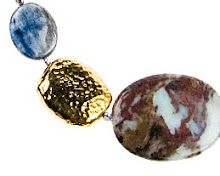
Cubic zirconia is most commonly thought of as a diamond substitute, and rightfully so. What shouldn't be overlooked, however, is the fascinating history and set of distinct qualities that make cubic zirconia wonderfully notable and unique all on its own
As a synthetic substitute, cubic zirconia has somewhat the same effect as gold vermeil, sterling silver, and cultured pearls: it allows the everyday jewellery enthusiast to enjoy the aesthetic marvels of a truly precious substance (diamonds, in this case) without paying an arm and a leg. To anyone without a professionally trained eye, diamonds and cubic zirconia beads are virtually indistinguishable.
As a naturally occurring phenomenon, zirconium oxide was discovered by German mineralogists in 1937. Many people don't know that it occurs naturally at all, but it certainly does, albeit in incredibly scarce quantities. Natural cubic zirconia is so rare, in fact, that upon first discovery it seemed insignificant- there simply wasn't enough to make use of. 
The discovery became immensely significant, however, in 1973, when Soviet scientists at the Lebedev Physical Institute in Moscow finally perfected synthesizing the substance. Three years later their discovery was published, and by 1980 cubic zirconia was in commercial production on a massive scale. The explosively fast rise of cubic zirconia in world attention and market prominence simply goes to show how hungry the world was for a good man-made diamond substitute.
Diamonds, of course, are much harder in density, but cubic zirconia is still incredibly hard by gemstone standards (8.5 on the Mohs scale, where most gemstones are around 5-6) and therefore immensely durable and basically scratchproof. Another little recognized fact is that since cubic zirconia is synthetically produced, it is almost totally flawless in terms of surface consistency and irregularities, where diamonds are often marked by natural discolorations and other imperfections.
Cubic zirconia is often dyed as well, which is something that only happens as 'enhancement' of natural colour with diamonds. Presumably, the relatively low cost of cubic zirconia encourages more liberal experimentation with things like colour and cut. Far from being a just a cheap diamond copy, cubic zirconia is a gemstone medium in its own right.
Click here to browse Cubic Zirconia at Stones and Findings

No comments:
Post a Comment